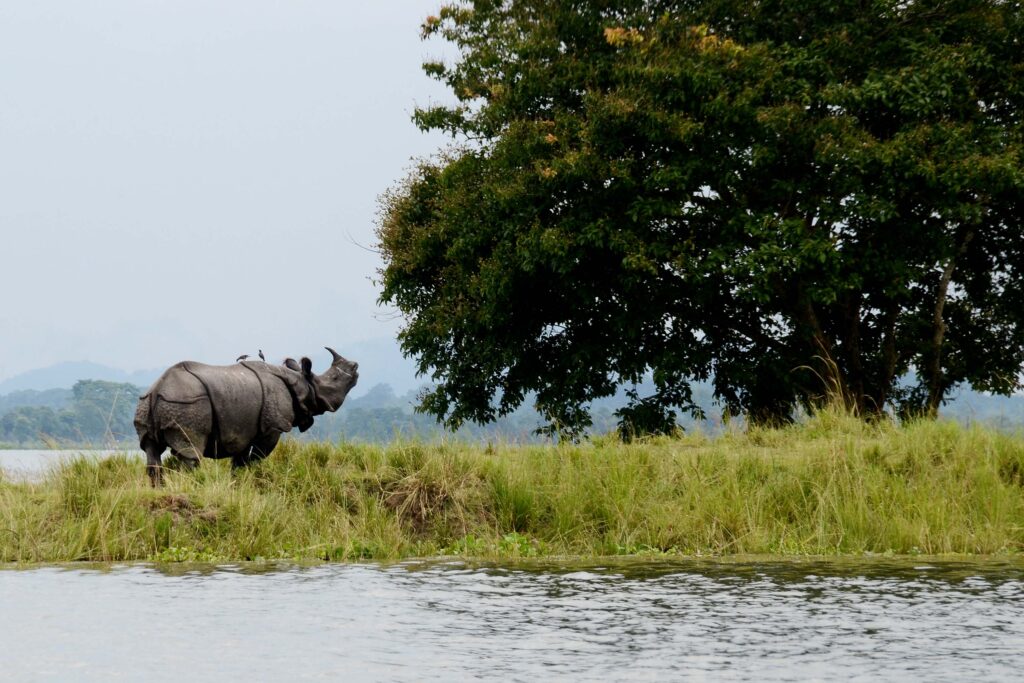
Kaziranga National Park and Tiger Reserve will reopen to tourists on October 1 for the 2024-25 season after the monsoon break. The park, known for its dense animal population, including the endangered one-horned rhinoceros, has faced significant animal losses due to recent flooding. Visitors can access the park by plane, train or road.
After a long hiatus (monsoon break), the UNESCO World Heritage Kaziranga National Park and Tiger Reserve will reopen to tourists for the 2024-25 season on October 1. According to reports, if weather conditions remain favorable, there will be no change to the opening date. Please note that the region is still recovering from the strong monsoons that hit Assam every year.
Kaziranga National Park and Tiger Reserve is one of the most popular national parks in India. The park is known for its dense wildlife population, including the endangered one-horned rhinoceros and several endemic and rare bird species.
Every year during the monsoon season, the park’s roads remain difficult to navigate. Only a few very rare routes remain accessible.
This year’s monsoon season was not ideal for Kaziranga. At least 215 animals in the national park lost their lives in the monsoon floods. Of these lives lost, 13 were one-horned rhinos. Other park victims include hog deer, swamp deer, wild pigs, and several smaller species.
Kaziranga has long been affected by seasonal flooding and this year was no exception. Every year, hundreds of park animals die during monsoon floods.
Despite these setbacks, the park remains a paradise for those seeking to experience India’s rich biodiversity. Tourists visiting Kaziranga during the 2024-25 season will still have the opportunity to observe a wide variety of wildlife up close, from majestic rhinos to rare bird species.
About Kaziranga National Park
Kaziranga National Park is a UNESCO World Heritage Site located in Assam, India. It is known for housing the largest population of Indian one-horned rhinos in the world. Covering more than 430 square kilometers, the park features a variety of ecosystems, from grasslands and swamps to dense forests. Created in 1905 to protect rhinos, the park is also home to more than 300 species of endangered birds and animals, such as the Bengal tiger and the Asian elephant. Its success in wildlife conservation is largely due to effective anti-poaching measures and community support.
How to reach Kaziranga National Park:
By Air: Just 97 kilometers away, Jorhat Airport is the nearest airport. Guwahati Airport or Lokpriya Gopinath Bordoloi International Airport is approximately 217 km from the park. You can hire a taxi or use public transport to reach Kaziranga.
By train: Furkating Junction, located just 75 kilometers away, is the closest train station to Kaziranga. This station is well connected to major cities like Guwahati and Jorhat.
By Road: From Guwahati, it will take around 4-5 hours by car or bus depending on traffic and weather conditions. Public and private buses are easily available from Guwahati, Tezpur and Jorhat.
Kaziranga National Park in Assam, a global model for rhino conservation: India
Kaziranga’s conservation model, which emphasizes investment in forest areas and scientific management of wildlife habitats, has gained global recognition. This model integrates biodiversity conservation, anti-poaching strategies and reforestation programs, ensuring the long-term survival of rhinos. By maintaining a rhino-centric approach, Assam remains a global leader in wildlife conservation,” MoEFF said in a document released as part of World Rhino Day celebrations.
Recently, Kaziranga National Park in Assam has achieved a remarkable 86% reduction in rhino poaching since 2016. This success was highlighted by Assam Chief Minister Himanta Biswa Sarma on World Rhino Poaching Day, marking which demonstrates the continued efforts to protect the one-horned rhinoceros. the rhinos are bearing fruit.















